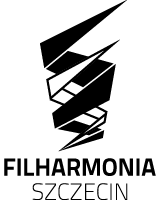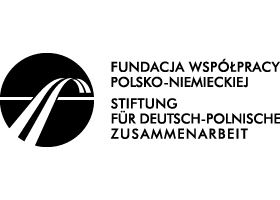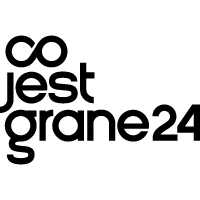
The final concert of the MUSIC.DESIGN.FORM festival ended with a standing ovation, whose first edition the first took place at the Philharmonic in Szczecin on 19-23 September. Five days of exhibitions, workshops, discussions on contemporary design, play with sound, light and image, and above all – unusual, even experimental and premiere concerts. The variety of means of artistic expression was to lead to creative searches and exceptional artistic experiences. Was it really like that? The lively reactions of festival participants who willingly interacted with attractions confirmed that it is worth organizing events that are outside the classical trend and beyond all schemes.
For some, it was controversial, for others it hit the nail on the head, but it was certainly awaited by everyone with the interest in the field. After all, such a festival as MUSIC.DESIGN.FORM – at the Philharmonic – has not yet existed, although experimental events and concerts outside the field of classical music are not rare at the Philharmonic in Szczecin. For the first time, however, they were compressed in five days and strengthened by a visual message, which certainly affected the reception of music. This was also the foundation of the festival, showing the conventionality of the division into genres and styles of artistic expression, as well as the conventionality of the boundaries in art, which were consistently blurred and crossed during the entire event.
The crowning of the second day was the unusual concert of Philip Glass’s music, before which a lecture on performativity in art and aesthetic experience led by prof. dr hab. Sabine Sanio (Universität der Künste Berlin) was held. The lecture was somewhat of a good introduction to the concert, in the sense of a new quality of aesthetic reception through a combination of visual arts and musical works. The music of the genius of minimalism has been masterfully performed by artists closely cooperating with Philip Glass for 10-15 years: Tim Fain – violin, Matt Haimovitz – cello and Maki Namekawa – piano. That evening, you could hear how Glass's compositions sounded, not only for each instrument separately, but also – performed by the whole trio, who perfectly feel the music, and how it was observed during the concert, draws enormous joy from performing it. The concert "An Evening of Chamber Music" by Philip Glass was exceptional for one more reason – the wall of the Symphony Hall located opposite to the listeners – came to life. Each work was accompanied by visualizations by Bartosz Wójcicki (Pushka Studio) and Radosław Deruba strictly correlated with music, among others in terms of the character, tempo or dynamics of the work. Such a message not only fits into the idea of the festival but also has a deeper meaning, influencing the reception of music. The characteristic triangles on the wall of the symphony hall, as well as other elements, opened and closed, moved away and zoomed in, obtaining a three-dimensional form – and it was only one of the many motifs used that played with light before the eyes of the audience, perfectly matching the minimalistic convention. The word concert in this context is too shallow because it was an event definitely going beyond the typically musical sensations.
According to the assumption of gradation of tension, light spectacles have been planned together with each festival day – evening visualization shows on the facade of the Philharmonic building, whose authors are Mrs Pawlosky and Bartosz Wójcicki (Pushka Studio). Initially, it was delicate and sparing with colours – minimalist. The intensity of light colours, shapes and pulsating animations on the facade grew every day, culminating in the final of the festival. A similar convention was applied in the mapped lobby of the Philharmonic.
The Level 4 Gallery was filled with photographs of Danish design by Piotr Topperzer and an exhibition of Scandinavian design, which consisted of simple and elegant furniture maintained in a minimalist style – functional art in its pure form. The VIP lounge, for the first time opened to a wider audience, became a place for historical presentations – as there were pieces of furniture designed by Ludwig Mies van der Rohe over 80 years ago. The starting point for arranging the exhibition of one of the most important representatives of modern architecture was the award of this artist’s name, which was awarded to the Philharmonic in Szczecin in 2015. On the second level in the foyer of the Symphony Hall, the furniture made by students and graduates of the Academy of Art in Szczecin encouraged creative exploration and entertainment. The Gallery at the Orthodox Church became a place for a retrospective look at visual works, books and films from the work of the Apparatjik band, who appeared on stage during the final concert on September 23. The Beliani Arvika exhibition awaited guests in the lobby – comfortable sofas, inviting to rest.
Great interest was aroused by an interactive installation – Spiralalala made by the pangGenerator group, which was located around the spiral staircase leading from the lobby up to the Level 4. encouraging to listen, watch, and first of all – act. And those willing to act were in abundance. It was enough to throw the ball into the "microphone", make a sound, sing or utter a sentence – anything, which wasn’t longer than 5 seconds and ...listen as the plastic ball rolled down the spiral track illuminated by light along with the electronically processed sound.
During the festival, there was much more electronic music. The performance of Beardyman showed that the boundaries can exceed also in the man-made sounds. The British artist gave an improvised performance, combining different genres of music. The final part of the concert took the form of a DJ set, in which Beardyman combined all sound sequences from every genre of music. Gestures of the artist were recorded by the camera and displayed on the wall of the Philharmonic lobby, creating a unique visualizations corresponding with the music. Equally strong was the experience provided by the dance event – the afterparty the Szczecin Club K4. Participants of the event could listen to Hellfish giving a live show. He is a major manufacturer of dance-experimental electronic music above 160 BPM, who came to Poland for the first time. During the afterparty, the collective Rombanka Soundsystem and the participants of DJ workshops, trained by Szczecin DJ and radio host, Szymon Karpierz AKA Zombie appeared on stage. In their performance, one could hear such genres as: trap, dubstep, d'n'b, hardcore, trance, techno and a little bit of rock. The program of the afterparty also included a multimedia project Hachiwari TV.
The festival had no age limits and creative interaction with art, in particular – music. Children were also welcome. During the workshops, the youngest participants working under the supervision of designers from the KODA Kids created musical instruments from recycled materials: paper, plastic and glass, and other unnecessary things. Young craftsmen and women then turned into artists and performed a musical piece composed by Dominika Sobkowiak especially for this occasion. The recycled orchestra was led by the composer herself. “It was my job to construct bells from screws of various lengths which were hung later on wires. My younger friend prepared the chimes in a similar way, which we immediately christened as the sound curtain. We have divided ourselves into two groups: melodic and rhythmic. My younger brother, Nicholas was in a drum group and he was hitting a fi 100 sewage pipe with a membrane on one side. Besides that, there were drums made from inverted buckets, barabans from ten-litre bottles filled with water, all kinds of canapes from cans, toilet rolls filled with coffee beans, containers with bottle caps, guiro made of corrugated pipes, rustling foils, and even adhesive tape rhythmically peeled off the ground. We made a lot of noise during the concert, but we had a lot of fun. Thank you for delicious fun!” – says Ania Romaniuk, one of the young participants of the workshops.
Just as much excitement among the youngest listeners was triggered by the concert "Navigator – music for the cityscape" (performed twice), which at the same time began the new season of the EduFilharmonia. The role of Navigator, who landed on planet Earth in order to collect sounds from Szczecin squares, was played by Agata Kolasińska – known to children from family concerts within the series DoNuta. The concert was exceptional because the contemporary music was sounding for an hour..., to which the youngest participants listened with bated breath. All thanks to its appropriate "administration" in the form of a fairy-tale tale inviting children to co-creation. The magical set design and visualizations realized by Ms Pawlosky – a well-known Szczecin visual artist who invited Marta Madej to cooperation, added an extraordinary atmosphere. Thanks to her, on the stage of the chamber hall, there was an enormous mushroom-spaceship mapped in real time. For the first time in the chamber hall of the Philharmonic, the 3D mapping technique was used, that is applying a two-dimensional image to a three-dimensional object. Each of the 10 most characteristic squares in Szczecin was characterized by one musical miniature, which was accompanied by an individual multimedia set design adapted as an artistic concept to the music and the name of the square. Children were involved in co-creating miniatures by verbal, sound-imitative or gestural reactions to a given signal. The musical-visual spectacle resembled almost a movie screening. Visualizations correlated with music emphasized the symbolic character of the place and helped in picking up contemporary works so hard to comprehend for children. The sound logotypes of the squares were composed for the needs of the MDF festival by ten Polish composers: Aleksandra Garbal, Alicja Gronau, Aleksander Kościów, Artur Kroschel, Monika Kędziora, Magdalena Cynk, Olga Hans, Sławomir Zamuszko, Artur Cieślak and Janusz Stalmierski, the author of the famous Szczecin bugle-call. The miniatures were made by the – FeelHarmony Quintet, which successfully performs contemporary music and is open to any challenges of new art.
Are you curious about your city, its identity and everything in between? What do we see? What do we feel? Such questions were addressed during the workshop "Sense Szczecin – building dreams for your city". The workshop participants were, among others, taken for a walk along the streets of Szczecin, during which they jointly determined the city's needs related to the given space, as well as possible solutions and improvements. The classes were conducted by Trine Blicher Folmer – a well-known Danish architect and owner of the Ghetto Studio, dealing with three aspects of city planning: physical, social and mental. On the other hand, the discussion panel "Durability, usefulness, beauty and what's next?" was devoted to issues of contemporary design. The panel was hosted by Radosław Gajda, and among the guests invited to the discussion were: Trine Blicher Folmer and Tomasz Sachanowicz.
On the last day of the festival, music was heard, which nobody had heard before. After a short introduction, the song "Heart" Op. 27 No. 5 by the contemporary composer Flint Juventino Beppe (present at the Symphony Hall during the performance of the piece) initiated a musical and visual feast. Next, there was an experimental work "The Sound of Szczecin", which was the result of an exceptional action, which was carried out in Szczecin. In April, the city streets were roamed by specially marked cars driven by well-known residents of Szczecin, including musicians, actors, journalists and representatives of cultural institutions. The cars were equipped with geodata recording devices, which was later transformed into binary codes, and these – into music codes. As a result, more than an eight-hour base material was created, containing quite accidental sounds, maintained in a single-voice texture. From among many sound motifs gathered, the author of arrangements and orchestration of the work – Mateusz Czarnowski chose the 20 most interesting ones and based on them the core of the composition. This is how the piece "The Sound of Szczecin" was created. It was performed for the first time by the Szczecin Philharmonic Symphony Orchestra under the baton of Rune Bergmann and the synth-pop group Apparatjik. How does Szczecin sound? Pretty positively. It is worth noting that the collective Apparatjik was performing in original, luminous costumes and characteristic helmets, which in combination with the changing lighting of the Symphony Hall gave an impressive and spectacular effect.
A huge applause from the audience was caused by the last point of the final concert – "A Heroine for our time – the artist Julia Pastrana". It was a musical tale in nine episodes about the tragic life of a Mexican circus artist Julia Pastrana – a famous woman with a beard, who was a vivid attraction of 19th-century Europe. In fact, it was a kind of theatrical-opera performance, because, in addition to music, the costumes of the Apparatjik band, the light and gestures of the performing soloists also played an important role. The role of the title character was played by BUIKA – a Spanish artist endowed with a unique voice and great performative/acting skills, which was literally – electrifying for the listeners. The tenor – Rafał Grozdew brought in a lot of dramaturgy. The soloists were accompanied by the Szczecin Philharmonic Symphony Orchestra under the baton of Rune Bergmann and Apparatjik. Mateusz Czarnowski was responsible for the orchestration and arrangements, while the technical implementation was trusted in audiocolor (Stefan Brunner, Timm Ringewaldt). The concert about Julia Pastrana was told by vocalists and sounds of symphonic and electronic nature as well as light. The artists were given a standing ovation on the last day of the MUSIC.DESIGN.FORM Festival.
We invite you to the next edition of the MDF festival next year!
Minimalism – the starting point
The crowning of the second day was the unusual concert of Philip Glass’s music, before which a lecture on performativity in art and aesthetic experience led by prof. dr hab. Sabine Sanio (Universität der Künste Berlin) was held. The lecture was somewhat of a good introduction to the concert, in the sense of a new quality of aesthetic reception through a combination of visual arts and musical works. The music of the genius of minimalism has been masterfully performed by artists closely cooperating with Philip Glass for 10-15 years: Tim Fain – violin, Matt Haimovitz – cello and Maki Namekawa – piano. That evening, you could hear how Glass's compositions sounded, not only for each instrument separately, but also – performed by the whole trio, who perfectly feel the music, and how it was observed during the concert, draws enormous joy from performing it. The concert "An Evening of Chamber Music" by Philip Glass was exceptional for one more reason – the wall of the Symphony Hall located opposite to the listeners – came to life. Each work was accompanied by visualizations by Bartosz Wójcicki (Pushka Studio) and Radosław Deruba strictly correlated with music, among others in terms of the character, tempo or dynamics of the work. Such a message not only fits into the idea of the festival but also has a deeper meaning, influencing the reception of music. The characteristic triangles on the wall of the symphony hall, as well as other elements, opened and closed, moved away and zoomed in, obtaining a three-dimensional form – and it was only one of the many motifs used that played with light before the eyes of the audience, perfectly matching the minimalistic convention. The word concert in this context is too shallow because it was an event definitely going beyond the typically musical sensations.
According to the assumption of gradation of tension, light spectacles have been planned together with each festival day – evening visualization shows on the facade of the Philharmonic building, whose authors are Mrs Pawlosky and Bartosz Wójcicki (Pushka Studio). Initially, it was delicate and sparing with colours – minimalist. The intensity of light colours, shapes and pulsating animations on the facade grew every day, culminating in the final of the festival. A similar convention was applied in the mapped lobby of the Philharmonic.
Philharmonic like a gallery
The Level 4 Gallery was filled with photographs of Danish design by Piotr Topperzer and an exhibition of Scandinavian design, which consisted of simple and elegant furniture maintained in a minimalist style – functional art in its pure form. The VIP lounge, for the first time opened to a wider audience, became a place for historical presentations – as there were pieces of furniture designed by Ludwig Mies van der Rohe over 80 years ago. The starting point for arranging the exhibition of one of the most important representatives of modern architecture was the award of this artist’s name, which was awarded to the Philharmonic in Szczecin in 2015. On the second level in the foyer of the Symphony Hall, the furniture made by students and graduates of the Academy of Art in Szczecin encouraged creative exploration and entertainment. The Gallery at the Orthodox Church became a place for a retrospective look at visual works, books and films from the work of the Apparatjik band, who appeared on stage during the final concert on September 23. The Beliani Arvika exhibition awaited guests in the lobby – comfortable sofas, inviting to rest.
Great interest was aroused by an interactive installation – Spiralalala made by the pangGenerator group, which was located around the spiral staircase leading from the lobby up to the Level 4. encouraging to listen, watch, and first of all – act. And those willing to act were in abundance. It was enough to throw the ball into the "microphone", make a sound, sing or utter a sentence – anything, which wasn’t longer than 5 seconds and ...listen as the plastic ball rolled down the spiral track illuminated by light along with the electronically processed sound.
The power of electronic sounds
During the festival, there was much more electronic music. The performance of Beardyman showed that the boundaries can exceed also in the man-made sounds. The British artist gave an improvised performance, combining different genres of music. The final part of the concert took the form of a DJ set, in which Beardyman combined all sound sequences from every genre of music. Gestures of the artist were recorded by the camera and displayed on the wall of the Philharmonic lobby, creating a unique visualizations corresponding with the music. Equally strong was the experience provided by the dance event – the afterparty the Szczecin Club K4. Participants of the event could listen to Hellfish giving a live show. He is a major manufacturer of dance-experimental electronic music above 160 BPM, who came to Poland for the first time. During the afterparty, the collective Rombanka Soundsystem and the participants of DJ workshops, trained by Szczecin DJ and radio host, Szymon Karpierz AKA Zombie appeared on stage. In their performance, one could hear such genres as: trap, dubstep, d'n'b, hardcore, trance, techno and a little bit of rock. The program of the afterparty also included a multimedia project Hachiwari TV.
MDF for children – mission accomplished
The festival had no age limits and creative interaction with art, in particular – music. Children were also welcome. During the workshops, the youngest participants working under the supervision of designers from the KODA Kids created musical instruments from recycled materials: paper, plastic and glass, and other unnecessary things. Young craftsmen and women then turned into artists and performed a musical piece composed by Dominika Sobkowiak especially for this occasion. The recycled orchestra was led by the composer herself. “It was my job to construct bells from screws of various lengths which were hung later on wires. My younger friend prepared the chimes in a similar way, which we immediately christened as the sound curtain. We have divided ourselves into two groups: melodic and rhythmic. My younger brother, Nicholas was in a drum group and he was hitting a fi 100 sewage pipe with a membrane on one side. Besides that, there were drums made from inverted buckets, barabans from ten-litre bottles filled with water, all kinds of canapes from cans, toilet rolls filled with coffee beans, containers with bottle caps, guiro made of corrugated pipes, rustling foils, and even adhesive tape rhythmically peeled off the ground. We made a lot of noise during the concert, but we had a lot of fun. Thank you for delicious fun!” – says Ania Romaniuk, one of the young participants of the workshops.
Just as much excitement among the youngest listeners was triggered by the concert "Navigator – music for the cityscape" (performed twice), which at the same time began the new season of the EduFilharmonia. The role of Navigator, who landed on planet Earth in order to collect sounds from Szczecin squares, was played by Agata Kolasińska – known to children from family concerts within the series DoNuta. The concert was exceptional because the contemporary music was sounding for an hour..., to which the youngest participants listened with bated breath. All thanks to its appropriate "administration" in the form of a fairy-tale tale inviting children to co-creation. The magical set design and visualizations realized by Ms Pawlosky – a well-known Szczecin visual artist who invited Marta Madej to cooperation, added an extraordinary atmosphere. Thanks to her, on the stage of the chamber hall, there was an enormous mushroom-spaceship mapped in real time. For the first time in the chamber hall of the Philharmonic, the 3D mapping technique was used, that is applying a two-dimensional image to a three-dimensional object. Each of the 10 most characteristic squares in Szczecin was characterized by one musical miniature, which was accompanied by an individual multimedia set design adapted as an artistic concept to the music and the name of the square. Children were involved in co-creating miniatures by verbal, sound-imitative or gestural reactions to a given signal. The musical-visual spectacle resembled almost a movie screening. Visualizations correlated with music emphasized the symbolic character of the place and helped in picking up contemporary works so hard to comprehend for children. The sound logotypes of the squares were composed for the needs of the MDF festival by ten Polish composers: Aleksandra Garbal, Alicja Gronau, Aleksander Kościów, Artur Kroschel, Monika Kędziora, Magdalena Cynk, Olga Hans, Sławomir Zamuszko, Artur Cieślak and Janusz Stalmierski, the author of the famous Szczecin bugle-call. The miniatures were made by the – FeelHarmony Quintet, which successfully performs contemporary music and is open to any challenges of new art.
Talks about design
Are you curious about your city, its identity and everything in between? What do we see? What do we feel? Such questions were addressed during the workshop "Sense Szczecin – building dreams for your city". The workshop participants were, among others, taken for a walk along the streets of Szczecin, during which they jointly determined the city's needs related to the given space, as well as possible solutions and improvements. The classes were conducted by Trine Blicher Folmer – a well-known Danish architect and owner of the Ghetto Studio, dealing with three aspects of city planning: physical, social and mental. On the other hand, the discussion panel "Durability, usefulness, beauty and what's next?" was devoted to issues of contemporary design. The panel was hosted by Radosław Gajda, and among the guests invited to the discussion were: Trine Blicher Folmer and Tomasz Sachanowicz.
The grand finale and musical Szczecin
On the last day of the festival, music was heard, which nobody had heard before. After a short introduction, the song "Heart" Op. 27 No. 5 by the contemporary composer Flint Juventino Beppe (present at the Symphony Hall during the performance of the piece) initiated a musical and visual feast. Next, there was an experimental work "The Sound of Szczecin", which was the result of an exceptional action, which was carried out in Szczecin. In April, the city streets were roamed by specially marked cars driven by well-known residents of Szczecin, including musicians, actors, journalists and representatives of cultural institutions. The cars were equipped with geodata recording devices, which was later transformed into binary codes, and these – into music codes. As a result, more than an eight-hour base material was created, containing quite accidental sounds, maintained in a single-voice texture. From among many sound motifs gathered, the author of arrangements and orchestration of the work – Mateusz Czarnowski chose the 20 most interesting ones and based on them the core of the composition. This is how the piece "The Sound of Szczecin" was created. It was performed for the first time by the Szczecin Philharmonic Symphony Orchestra under the baton of Rune Bergmann and the synth-pop group Apparatjik. How does Szczecin sound? Pretty positively. It is worth noting that the collective Apparatjik was performing in original, luminous costumes and characteristic helmets, which in combination with the changing lighting of the Symphony Hall gave an impressive and spectacular effect.
A huge applause from the audience was caused by the last point of the final concert – "A Heroine for our time – the artist Julia Pastrana". It was a musical tale in nine episodes about the tragic life of a Mexican circus artist Julia Pastrana – a famous woman with a beard, who was a vivid attraction of 19th-century Europe. In fact, it was a kind of theatrical-opera performance, because, in addition to music, the costumes of the Apparatjik band, the light and gestures of the performing soloists also played an important role. The role of the title character was played by BUIKA – a Spanish artist endowed with a unique voice and great performative/acting skills, which was literally – electrifying for the listeners. The tenor – Rafał Grozdew brought in a lot of dramaturgy. The soloists were accompanied by the Szczecin Philharmonic Symphony Orchestra under the baton of Rune Bergmann and Apparatjik. Mateusz Czarnowski was responsible for the orchestration and arrangements, while the technical implementation was trusted in audiocolor (Stefan Brunner, Timm Ringewaldt). The concert about Julia Pastrana was told by vocalists and sounds of symphonic and electronic nature as well as light. The artists were given a standing ovation on the last day of the MUSIC.DESIGN.FORM Festival.
We invite you to the next edition of the MDF festival next year!
VIDEOS AND PHOTOS
WYDARZENIA
19-09-2018, 20:00 | 20-09-2018, 20:00 | 21-09-2018, 20:00 | 22-09-2018, 20:00 | 23-09-2018, 20:00The Philharmonic in Szczecin facade visualization screening -
19-09-2018, 18:00Exhibition – Apparatjik - Exhibition
19-09-2018, 18:00Danish design through the lens of Piotr Topperzer - Exhibition
23-09-2018, 19:00BUIKA | Apparatjik | Dimensions of Music Form - Symphonic concert
22-09-2018, 22:00Afterparty - Dancing party
22-09-2018, 16:00 | 22-09-2018, 18:00Navigator - musical logos of the cityscape - Concert
21-09-2018, 21:00Beardyman - Concert
21-09-2018, 19:00Discussion panel “Durability, usefulness, beauty, and what next?” - Discussion panel
20-09-2018, 19:00An Evening of Chamber Music by Philip Glass - Concert
Repertoire for the second part of the season and ticket sales
24-09-2018 12:15
Dwa dni festiwalu MDF za nami
21-09-2018 11:06
MDF Festival 2018 wystartował!
20-09-2018 14:48
MDF Festival dla dzieci
18-09-2018 14:18























